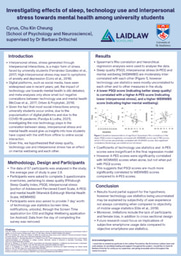The trials and tribulations of building a survey (no, really)

The survey is often one of the simplest and most widely used tools in the psychologist’s toolbox, and it shows. They’re everywhere – be it the poster boards of libraries to the depth of our email inboxes. When I chose the survey as my main method of data collection, I thought it would be the easy part of my research – but it wasn’t quite what I thought it was. In this blog post, I’d like to reflect on the time I spent setting up my survey and getting the ball rolling, from design and flow to finding people to fill in the survey.
Setting up the Survey
To have a functioning survey you first need to know what you’re measuring, which isn’t too difficult. It’s not too difficult to read the literature and find scales to build your surveys on – and this is what I was most familiar with about research.
Putting the core of the survey together isn’t that hard, either. Most surveys, including mine, use Qualtrics – it’s free for most university students, and it’s quite intuitive to use. Survey builders like Qualtrics uses a survey flow system to show participants what sections of the survey they can see, and in what order – meaning that things like condition randomisation or informed consent (more on that later) can be implemented this way. You put the survey together in a branching tree and add logic (if a condition is met then show participants something) – in a sense, it’s just like building a Lego set.

Getting ethical approval
What’s harder, though, is getting ethical approval. Things like informed consent and participation confidentiality is obviously important on the surface, but how do you implement these concepts into the survey itself?
The answer is a lot of administrative work. A lengthy disclaimer, accompanied by a “participation information sheet (essentially an FAQ for participants) must be written out. Moreover, every detail about the project – from how participants are recruited to how they will complete the survey, as well as the risks and anticipated benefits to the participants have to be recounted in excruciating detail in the ethics proposal form. Finally, a “data management plan” – essentially how data from the survey is going to be collected, transferred, stored and accessed, has to be made to make clear that the data from the survey is going to be handled responsibly. It’s a lot of work – but it’s all very very necessary to protect the wellbeing and anonymity of the participants.
As someone without prior experiences of running a self-led project, I was surprised at the amount of administrative work I had to do for this stage of the process. I allocated two weeks’ time to complete the ethics proposal for my survey, and I’m almost embarrassed to say that even with the amount of time I had, I almost turned it in late.
Promoting the survey
I would eventually find out that the key to getting people to fill in your survey is to a) have a good design of your poster and b) promoting your study everywhere, and both parts are equally difficult.
Designing a poster using Canva isn’t that difficult – but designing a good poster is. When I initially designed my poster, I treated it like a participant information sheet – I put everything on there, including the full 19-word title of my project. Needless to say, when I showed it to my friends, they didn’t know what was going on.

After revisions and understanding how I should better highlight what I wanted participants to see, I eventually settled on this slightly better design, which had less text and more bold text so the important bits could stand out more on a screen:

Making your design stand out is one thing, while actually promoting it is another. I had chosen to snowball my study through personal social networks instead of going on participant recruitment sites like Prolific in the interest of cost – and I had always dreaded this because of the anxiety that everything will go wrong and people will stop talking to me because I promoted my survey on social media one too many times. (The anxiety seems unfounded but I really did think that at one point.)

Eventually, though, I swallowed my pride and got over my self-consciousness, and dropped my survey on most of the group chats and active Facebook groups I’m in. And, it went surprisingly well! I’ve gotten a lot of support not just from the St Andrews Scholars themselves, but from other members of the St Andrews community as well – and so if you’re reading this, thank you so much for being part of my study :D
Concluding thoughts
It might be obvious in hindsight, but so far I’ve learnt a few things from something even as simple as a setting up a survey –
- Communicate, communicate, communicate. Take the time to annoy your supervisor or your friends about the study (but not too much) – without the help of my friends and my supervisor Dr Dritschel I would not have been able to navigate the process so efficiently.
- Get over yourself. I feel I doubted myself a lot even in this mundane process of making a survey – and most of those fears turned out to be unfounded.
- Reflect on what you do. Writing this blogpost has made me realise how much my mindset and attitude towards the project has improved – and well, I always welcome the opportunity to reflect on my mistakes.




Please sign in
If you are a registered user on Laidlaw Scholars Network, please sign in